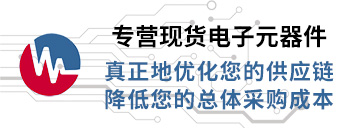

NT3H1201W0FTT是NXP公司的一款读卡器IC产品,NT3H1201W0FTT是NTAG I2C - Energy harvesting NFC Forum Type 2 Tag with field detection pin and I2C interface,本站介绍了NT3H1201W0FTT的封装应用图解、特点和优点、功能等,并给出了与NT3H1201W0FTT相关的NXP元器件型号供参考。
NT3H1201W0FTT - NTAG I2C - Energy harvesting NFC Forum Type 2 Tag with field detection pin and I2C interface - 读卡器IC - 接口与连接性 - 恩智浦, LLC
The NTAG I2C is the first product of NXP’s NTAG family offering both contactless andcontact interfaces. In addition to the passive NFC Forum compliantcontactless interface, the IC features an I2C contact interface, which can communicatewith a microcontroller if the NTAG I2C is powered from an external power supply. Anadditional externally powered SRAM mapped into the memory allows a fast data transferbetween the RF and I2C interfaces and vice versa, without the write cycle limitations of theEEPROM memory.
The NTAG I2C product features a configurable field detection pin, which provides a triggerto an external device depending on the activities at the RF interface.
The NTAG I2C product can also supply power to external (low power) devices (e.g. amicrocontroller) via the embedded energy harvesting circuitry.
More information about NTAG I2C applications and use cases can be found in brochure“NFC for embedded applications”.
Key features
- RF interface NFC Forum Type 2 Tag compliant
- I2C interface
- Configurable field detection pin based on open drain implementation that can betriggered upon the following events:
- RF field presence
- First start of communication
- Selection of the tag only
- 64 byte SRAM buffer for fast transfer of data (Pass-through mode) between the RFand the I2C interfaces located outside the User Memory
- Wake up signal at the field detect pin when:
- New data has arrived from one interface
- Data has been read by the receiving interface
- Clear arbitration between RF and I2C interfaces:
- First come, first serve strategy
- Status flag bits to signal if one interface is busy writing to or reading data from theEEPROM
- Energy harvesting functionality to power external devices (e.g. microcontroller)
- FAST READ command for faster data reading
RF interface
- Contactless transmission of data
- NFC Forum Type 2 Tag compliant
- Operating frequency of 13.56 MHz
- Data transfer of 106 kbit/s
- 4 bytes (one page) written including all overhead in 4.8 ms via EEPROM or 0.8ms via SRAM (Pass-through mode)
- Data integrity of 16-bit CRC, parity, bit coding, bit counting
- Operating distance of up to 100 mm (depending on various parameters, such asfield strength and antenna geometry)
- True anticollision
- Unique 7 byte serial number (cascade level 2 according to ISO/IEC 14443-3
Memory
- 1904 bytes freely available with User Read/Write area (476 pages with 4 bytesper pages) for the NTAG I2C 2k version
- 888 bytes freely available with User Read/Write area (222 pages with 4 bytesper pages) for the NTAG I2C 1k version
- Field programmable RF read-only locking function with static and dynamic lockbits configurable from both I2C and NFC interfaces
- 64 bytes SRAM volatile memory without write endurance limitation
- Data retention time of 20 years
- Write endurance 500,000 cycles
I2C interface
- I2C slave interface supports Standard (100 kHz) and Fast (up to400 kHz) mode
- 16 bytes (one block) written in 4.5 ms (EEPROM) or 0.4 ms (SRAM -Pass-through mode) including all overhead
- RFID chip can be used as standard I2C EEPROM
Security
- Manufacturer-programmed 7-byte UID for each device
- Capability container with one time programmable bits
- Field programmable read-only locking function per page for first 12 pages andper 16 (1k version) or 32 (2k version) pages for the extended memorysection
Key benefits
- The Pass-through mode allows fast download and upload of data from RF toI2C and vice versa without the cycling limitation ofEEPROM
- NDEF message storage up to 1904 bytes (2k version) or up to 888 bytes (1kversion)
- The mapping of the SRAM inside the User Memory buffer allows dynamic updateof NDEF message content
- Zero power configuration (late customization)
- Smart customer interaction (e.g., easier after sales service, such as firmware update)
- Advanced pairing (for e.g., WiFi or Blue tooth) for dynamic generation of sessions keys
- Home automation
- Home appliances
- Consumer electronics
- Healthcare
- Printers
- Smart meters






